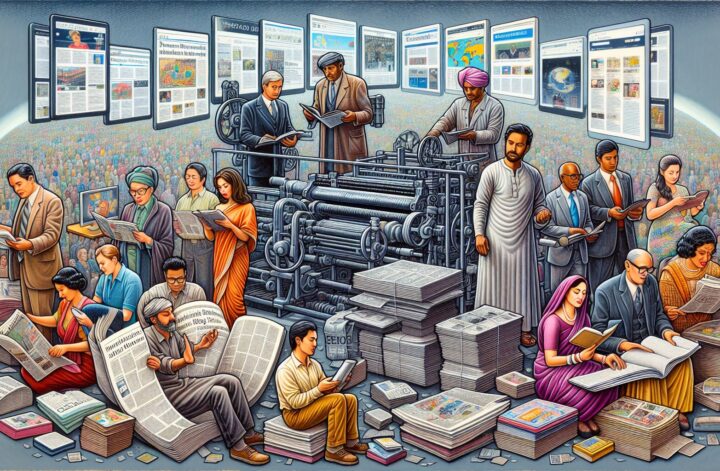In today’s digital age, it’s easy to overlook the importance of printing materials. With the rise of online communication and digital advertising, many businesses and individuals have shifted their focus away from traditional print media. However, there are still numerous occasions where printed materials play a vital role in conveying information, leaving a lasting impression, and enhancing brand awareness. In this blog post, we will explore the significance of selecting the right printing materials, how they can impact your business or personal needs, and provide insights to help you make informed choices.
Why Printing Materials Matter
Before delving into the details of various printing materials, let’s take a moment to understand why they matter in the first place. Despite rapid technological advances, print materials have unique advantages that cannot be replicated digitally.
Tangibility and Permanence
One of the main advantages of printed materials is their tangibility. Unlike digital media, which can be fleeting and easily forgotten, physical prints offer a lasting presence. Whether it’s a business card handed out at a conference or a well-designed brochure left in a waiting room, printed materials can be physically held, shared, and referred back to anytime. Their permanence helps ensure your message reaches your audience and remains accessible, even in a technology-driven world.
Enhanced Branding and Credibility
Printed materials provide a tangible representation of your brand or personal image. Well-designed business cards, letterheads, and brochures can enhance your professionalism, credibility, and brand image. By using high-quality materials, visually appealing designs, and consistent branding elements, you can convey a sense of trustworthiness and attention to detail to potential clients and customers.
Targeted Marketing and Personalization
Printed materials provide a versatile platform for targeted marketing and personalization. Whether you’re distributing flyers in a specific neighborhood or sending personalized mailers to prospective clients, print materials allow you to reach your desired audience effectively. By tailoring the design, content, and distribution channels to your target market, you can maximize the impact of your advertising efforts.
Choosing the Right Printing Materials
Now that we understand the importance of printing materials, let’s explore some popular options and considerations to keep in mind when making your choices.
Paper and Cardstock
Paper and cardstock are the foundation of most printed materials. When selecting paper, consider its weight, finish, and color. A heavier weight paper or cardstock conveys a sense of quality and durability, making it suitable for business cards, invitations, or brochures. The finish of the paper, such as matte or glossy, can enhance the visual appeal and perceived value of your printed items. Additionally, choosing the right color, whether it’s white or a tinted variant, can influence the overall look and feel of your printed materials.
Ink and Printing Techniques
Choosing the right ink and printing techniques can significantly impact the appearance and quality of your printed materials. Various printing techniques, such as offset printing, digital printing, or letterpress, each offer unique advantages and considerations. Depending on your needs, budget, and desired outcome, you may opt for one technique over another. Similarly, choosing the appropriate type of ink, such as dye-based or pigment-based, can affect the vibrancy, longevity, and overall quality of your printed materials.
Finishing Touches
To elevate your printed materials further, consider adding finishing touches. These include techniques like embossing, debossing, foil stamping, or spot UV coating. These embellishments can add texture, visual interest, and a touch of luxury to your printed items. However, it’s essential to strike a balance between the desired aesthetic and the practicality of such enhancements, as they may impact the cost and production time of your printed materials.
Environmentally Conscious Choices
As we become increasingly aware of our impact on the environment, it’s crucial to select printing materials that align with sustainable practices. When choosing paper, opt for those sourced from sustainable forests or recycled materials. Look for printers that utilize eco-friendly printing techniques and inks with low VOC (volatile organic compounds) emissions. By making environmentally conscious choices, you can contribute to reducing your carbon footprint while still benefiting from the advantages of printed materials.
Conclusion
In a world dominated by digital communication, printed materials remain an essential tool for conveying information, establishing credibility, and promoting brand awareness. Tangibility, enhanced branding, targeted marketing, and personalization are just a few of the advantages that printed materials offer. By selecting the right printing materials, such as paper, ink, and finishing touches, you can maximize the impact of your printed items. Additionally, it’s important to prioritize environmentally conscious choices to reduce the ecological impact of print media. In the end, by understanding the significance of print materials and making informed choices, you can effectively leverage their unique benefits for your business or personal needs.

